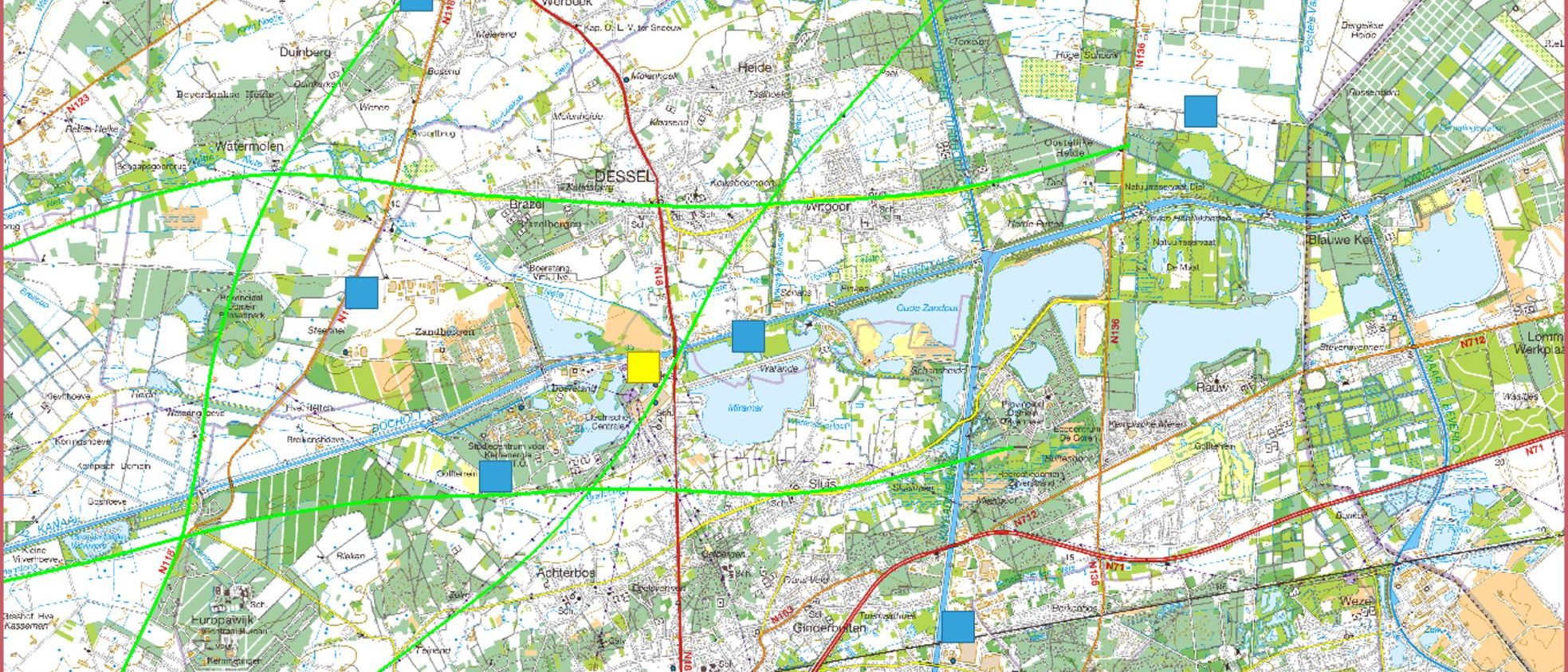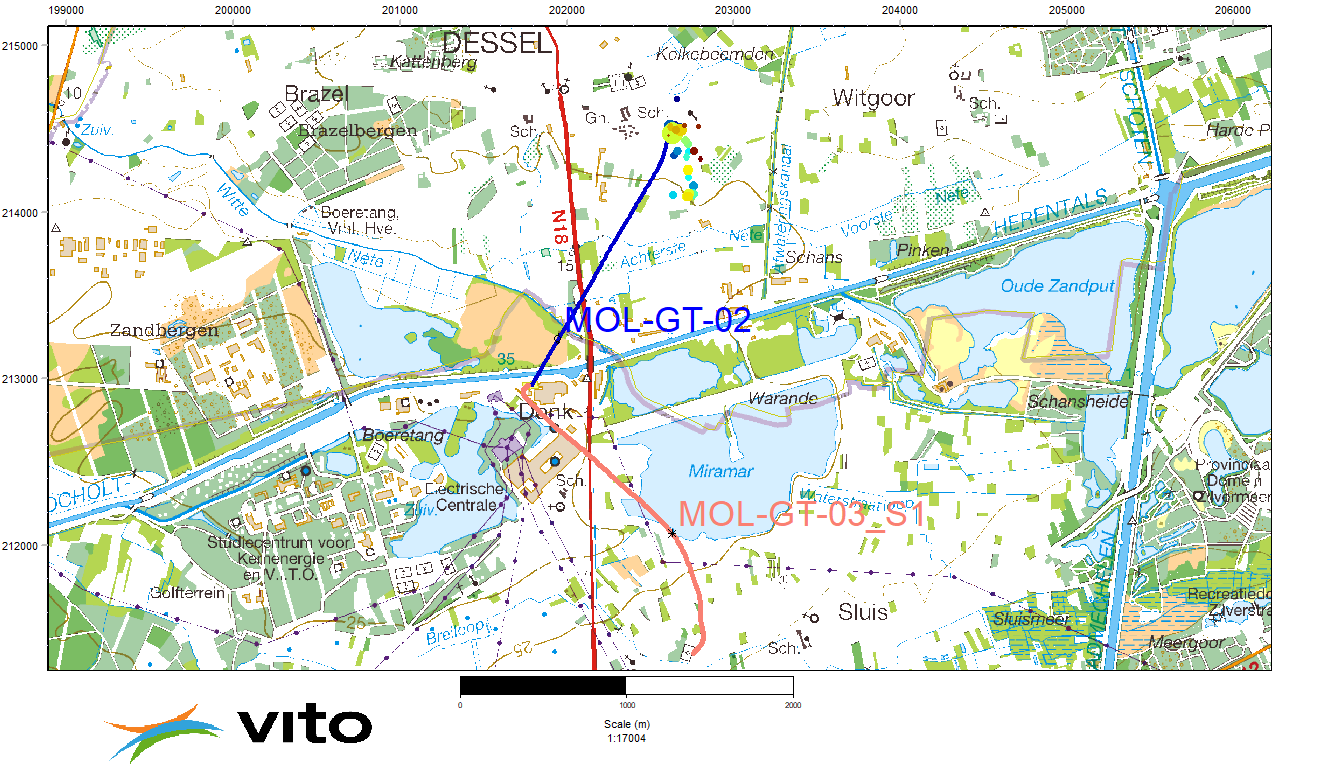It is well known that deep geothermal energy can cause earthquakes. These are usually mild earthquakes that can only be recorded using sensitive measurement equipment. The injection of cooled water appears to be a significant cause of these. By determining the location of the earthquakes, we are able to establish how the substrate responds to differences in pressure in connection with the injection. This allows us to become more familiar with the substrate.
Seismometer network
The injection of water into the deep substrate causes small movements that give rise to earthquakes. Artificially induced earthquakes are a focal point in the development of every deep geothermal energy project and are an important topic of research. It is for this reason that VITO has further developed a seismometer network. The network allows us to pinpoint the soil movements to within several tens of metres. By comparing the locations of consecutive earthquakes, we can calculate the direction in which the pressure effects of the injection continue. We are therefore able to monitor whether they occur in proximity to major fracture systems. By monitoring the injection (pressure and temperature), VITO is hoping to guarantee the safe operation of the geothermal energy plant.
blue blocks: seismometers, yellow block: geothermal energy plant
What are microearthquakes?
Seismic activity is the result of the reinjection of partly cooled water from the Balmatt geothermal energy plant. The first earthquakes occurred during the injection tests carried out in September 2016. This was also the case at the time of the launch of the geothermal energy plant in December 2018. The seismometer network was able to detect 40 soil movements. All movements occurred close to the injection zone of well 2, which is located beneath the municipality of Dessel.
blue line: course of well 2 - injection well, orange-red: course of well 3
How do these occur?
Small movements occur along the cracks and crevices in the limestone, which then open up further as a result of the enforced flow and overpressures.
Monitoring
We calculate the direction in which the consecutive movements take place. By doing so, we examine whether the soil moves in the vicinity of major fracture structures, for example. As a result, we know when and where seismic activity occurs. The measurement data are also communicated in real-time to the Royal Observatory of Belgium (ROB), which can use these for research purposes. The automatic detection limit of the ROB is close to a magnitude of 1 on the Richter scale and all seismic events above this limit are published at www.seismologie.be
What’s next?
We will carry out further monitoring and refine our monitoring and production procedures. By doing so, we hope to prevent earthquakes that can be felt on the earth's surface (from a magnitude of 2.5-3 on the Richter scale).
To summarise
Seismicity is inherent to the injection of water in the deep substrate. With our seismometer network, we can accurately locate the soil movements. By comparing the locations of consecutive events, we can determine the direction in which the pressure effects of the injection continue. We are therefore able to monitor whether they occur in the region of major fracture systems. As a result, we are able to redirect the injection in a timely fashion, if necessary, and thus ensure that the intensity of the earthquakes remains sufficiently low.
Expansion of the seismometer network and collaboration with NIRAS
VITO and NIRAS have concluded a collaboration agreement for exchanging information regarding the substrate. NIRAS had already placed seismometers in the nuclear zone of Mol-Dessel, in the immediate vicinity of the Balmatt-site, including two underground. The detailed analysis of the measurement data of these seismometers during drilling and testing showed that a number of earthquakes occurred in the deep substrate during the period in which the injection tests were carried out. The strongest tremor measured 0.9 on the Richter scale. The epicentres of the earthquake were located at a depth of around 4 km, in the vicinity of the injection well.
Valuable data
There are only a few well-documented recordings of induced seismicity in the world within the scope of tests carried out on geothermal energy wells. This data has given us new information regarding the behaviour of the geothermal reservoir below Mol and Dessel when pumping up and injecting water. It was also one of the factors that made it possible to estimate the chance of induced earthquakes occurring during the production phase as accurately as possible, as well as the associated risks. We used the insights obtained to compile a provisional protocol in order to keep the possible risks during the production phase to a minimum. VITO has expanded the seismometer network around the Balmatt site in order for this protocol to be rolled out. A total of seven underground and two overground seismometers are now in operation around the site. We will use all new insights in order to develop a specific monitoring and risk management system for deep geothermal energy projects. This is an important step for the further safe rollout of deep geothermal energy in the Kempen region and in other parts of the world.



